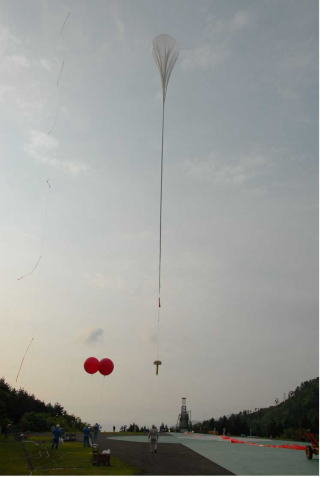Research
気球を用いた微小重力実験システムの開発研究
Development of micro-gravity experiment system using high-altitude balloon

宇宙空間は微小重力科学の実験を行うには絶好の環境ですが、実験するための費用や、準備に要する期間は膨大になります。予備的な研究の場合、地上の落下塔を用いた数秒間の実験や、航空機による放物線飛行を用いた20秒間程度の微小重力環境を利用していますが、1G環境からの過渡現象の影響を受けるなど、精度の高い実験が難しくなっています。我々は、実験装置を大気球につり下げ、高度約40kmから自由落下させることにより、30秒以上の微小重力実験を可能とするシステムを開発しています。理想的な微小重力を実現するための2重殻構造ドラッグフリー制御、超音速飛翔体の機体制御などの研究を行っています。
【実証試験】
2006年5月 第1回フライト 成功
2007年5月 第2回フライト 成功
2009年5月 第3回フライト 成功
※本研究は文部科学省科学研究費補助金(学術創成(2):16GS0220「高高度気球を用いた微小重力実験装置の開発」)を受けて、平成16年度から21年度の期間で実施してきました。その後は、澤井研究室、石川研究室などで、関連研究が続けられています。
Though Space is suitable environment for experiments of micro-gravity science, it takes large cost and needs long preparation time. In case of basic research, sometimes drop tower or parabolic flight of airplanes are used for low-cost micro-gravity environment, however, their duration time of micro-gravity is a few seconds or 20 seconds, respectively. We are developing medium-cost and more than 30 seconds high-quality micro-gravity experiment system. That is, the system is lifted by high-altitude balloon and is dropped at 40 km altitude. While free-falling, the system compensates air-drag with drag-free control of double shell structure.
Links: JAXA Balloon Center, Sawai Lab.